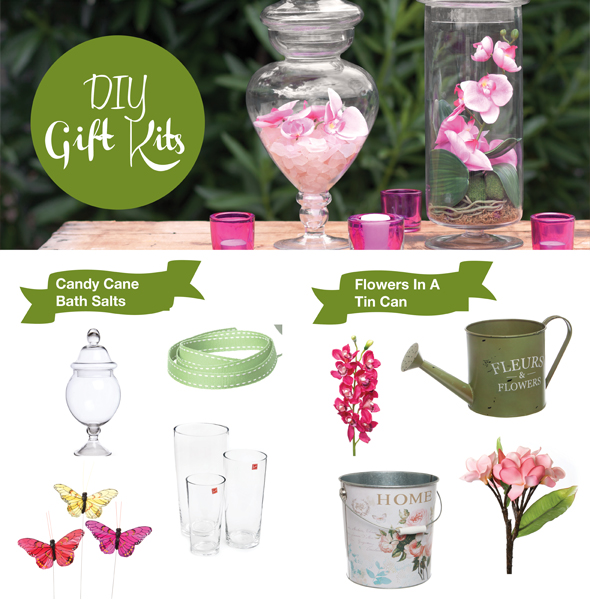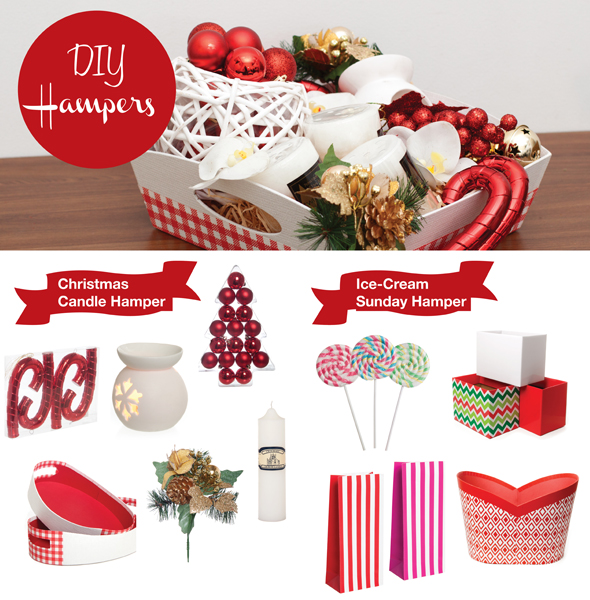
Great DIY Kris Kringle Gift Ideas
Homemade Kris Kringle Gift Ideas
Wondering what you should give your office Kris Kringle? Stuck for inexpensive but thoughtful teacher presents or stocking fillers? Don’t stress! We’ve put together a few easy DIY Christmas gift ideas that you’ll enjoy making – and they’ll be thrilled to receive.
Ice-cream Sundae Hamper
An Australian Christmas can certainly be a hot one. For a cute – and inexpensive – gift that’ll help the recipient cool off during the summer, gift them a homemade ice-cream sundae kit! Fill a Christmas gift box or Christmas hamper tray with all the things they’ll need to make their own sundaes and cones – all they’ll have to do is supply their own ice-cream. Package some waffle cones in cello bags tied with Christmas ribbon or bakers’ twine. Do the same with little packets of sweets that they can put on their ice-cream, such as gummi bears, chocolate chips, sprinkles and so on. Don’t forget to add a jar of homemade or store-bought chocolate topping!
Homemade Candle Hamper & Photo Vase
After a great gift that’s inexpensive to make, but full of sentimental value? A candle hamper is always a great gift. To make the candle hamper, all you need is a hamper box, some Christmas flowers and candles, candy canes, and some other festive goodies! If you want to make it extra special, you can add in a photo vase, which is a fantastic personalised gift and the end result belies the easy effort involved. Just print a black-and-white photo on vellum paper and wrap it around a long, clear glass vase. Attach it to the vase by sticking both ends on with double-sided tape and put a candle or LED tea light inside the vase. Too easy!

Candy Cane Bath Salts
This indulgent gift is both quick and easy to prepare. It’s a fantastic idea when you need stocking fillers or teacher gifts, as you can make as much as you need in a single batch. To make the bath salts, pour 2 cups of sea salt or Epsom salts into a glass bowl. Add a teaspoon of peppermint extract or peppermint oil and combine so that there are no lumps. Add at least 12 drops of red food colouring (more if using sea salt), five drops at a time, and combine. Keep some lumps unbroken, to create the effect of broken candy canes. Allow the mix to dry completely overnight, then pour into a glass jar. Decorate the jar with some Christmas ribbon and a Christmas pick.
Flowers in a Watering Can
Does your Secret Santa recipient have a green thumb? Everyone loves Christmas flowers – pander to their horticultural hobby and give them a garden plant they can cultivate in their own garden! Just pack some soil and a plant (perhaps a transplanted sample from your own garden) inside a cute tin watering can – voila!
The post Great DIY Kris Kringle Gift Ideas appeared first on Koch & Co Blog.
